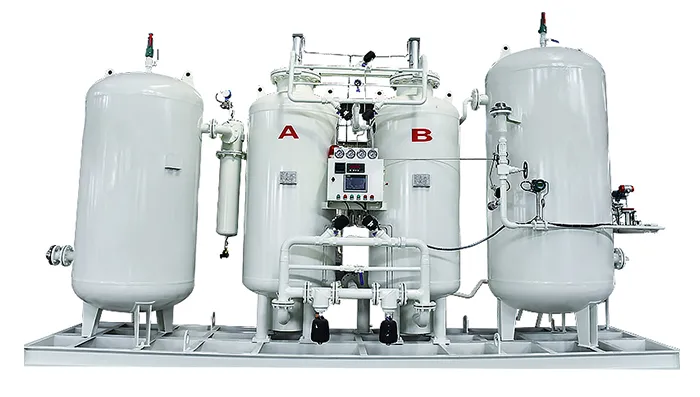Nitrogen generators operate using Pressure Swing Adsorption (PSA) technology, a process that relies on adsorption at ambient temperatures. PSA is a heatless adsorption separation process where the adsorption capacity of carbon molecular sieves for the adsorbate components (mainly oxygen molecules) increases with higher partial pressures and decreases with lower ones. In this way, the carbon molecular sieves adsorb during pressurization, desorb during depressurization, releasing the adsorbed comp
The PSA process involves several stages: adsorption, pressure reduction, release, and purge, followed by re-pressurization, forming a cyclic operation sequence.
PSA nitrogen generators can be classified into vacuum regeneration and atmospheric regeneration processes based on the regeneration pressure. Typically, they use an atmospheric regeneration process where compressed and regulated feed air passes through a cooler and oil removal system, then through filters into the adsorption towers filled with carbon molecular sieves. The upper part of the adsorption tower releases product nitrogen gas, while the adsorbed oxygen is discharged directly into the atmosphere, facilitating the regeneration of the carbon molecular sieves.

 EN
EN






